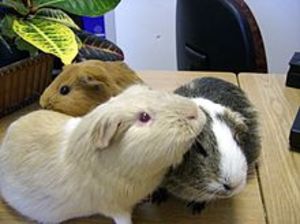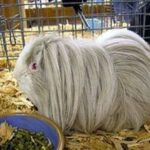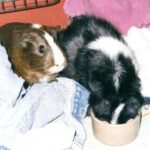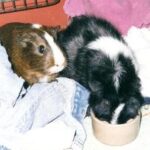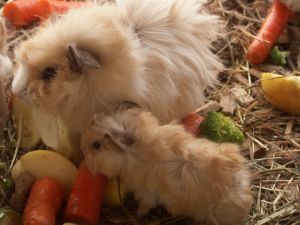Guinea pigs are cute, friendly and come in a wide variety of colors and patterns. But here are ten things you need to know about guinea pigs before bringing one home.
One: Guinea Pigs Are Not From Guinea
Historians are unclear as to how guinea pigs (Cavia porcellus) got their name. They are from South America and not from the African country of Guinea as their common name implies. It could be that boats from South America to Europe stopped off at Guinea before returning to their home ports.
Two: Guinea Pigs Are Not Pigs
Although they squeal, grunt and get quite chubby, guinea pigs are not related to pigs. They are rodents, although they are more closely related beavers and chinchillas more than mice and rats. Also, being a rodent means that their teeth growths throughout their lives. In order to prevent malocclusion, guinea pigs should be given hard foods and treats to help wear their teeth down.
Three: Guinea Pigs are Also Called Cavies
Guinea pig showers and breeders try to rectify this mistake by calling guinea pigs “cavies” instead of guinea pigs. However, the misnomer has stuck and they are called guinea pigs all over the English-speaking world. The German name, Die Meerschweinschen, means “little pigs from across the sea.
Four: There Are No Wild Guinea Pigs
The species Cavia porcellus is not found in the wild. Somehow, in the last few thousand years, they have all been domesticated. There are wild cavy species in South America that may be ancestors of the domestic guinea pig, but this is still unknown. These species include the Montane guinea pig (Cavia tschudii) and the Brazilian guinea pig (Cavia aperea.)
Five: Guinea Pigs Were Domesticated By the Incas
Modern guinea pigs were kept as pets, for food and for special sacrifices to the gods by the Incas as far back as 5000 years ago. They were bred for hair length and tastiness of their meat. There is a theory that guinea pigs were also kept as “watchdogs” but Incas also had dogs. Conquistadores and colonists were enchanted with the little animal called “cuy” by the natives and shipped them to Europe.
Six: Some Guinea Pigs Get Really Big
Guinea pigs are still kept as livestock in modern Peru and in the Andes mountains, where the guinea pigs are one of the only sources of meat. In recent years, there has been an attempt to breed a “superpig” which weighs about 4 to 5 pounds, about twice as much as a normal guinea pig.
Seven: Guinea Pigs Are Allergic to Penicillin
All guinea pigs are allergic to penicillin and any antibiotics related to penicillin. Giving these antibiotics to a guinea pig can kill it. Sadly, not all veterinarians know this. This is why it is important to find a vet who is experienced in treating guinea pigs.
Eight: Virgin Female Guinea Pigs Older Than Six Months Should Not Be Bred
After a female guinea pig or sow is six months old, her hip bones fuse. If she becomes pregnant, she and the babies or pups will die because there is not enough room for the pups to come out. Never keep male guinea pigs or boars with sows over six months old unless they have been neutered.
Nine: Guinea Pigs Eat Their Poop
Technically, what the guinea pig eats isn’t poop, but it does look like poop. They’re called caecotrophs and they come out the same place poop does. Some nutrients like B vitamins are too hard for a guinea pig to digest once. But they can digest them twice. Just as cows chew cud, guinea pigs chew caecotrophs. Guinea pigs should never be discouraged from doing what looks like eating their poop.
Ten: Guinea Pigs Cannot Survive in the Wild
Some uncaring and ignorant guinea pig owners dump their pets off in public parks when they no longer want to keep them. Guinea pigs have no defenses against predators. They also do not know how to find food, water or shelter instinctively. Any abandoned guinea pig soon dies from exposure, starvation, being eaten by other animals or hit by oncoming traffic. Pet owners who can no longer care for their pets should relinquish their animals to their local animal shelter.
Sources
- ·. Bow Tie Press; 2005.
- · The Guinea Pig Handbook. Sharon L. Vanderlip, DVM. Barron’s; 2003.
- · The Proper Care of Guinea Pigs. Peter Gurney. TFH; 1992.
- · Guinea Lynx: Medical and Care Guide for Guinea Pigs.
